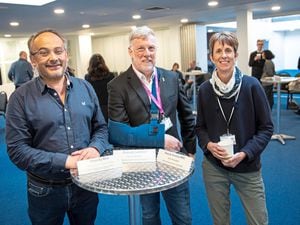‘Separate sixth form college option is unviable’ says Roffey
FRESH pupil number projections from Education show that a separate sixth form college is unviable, according to a former committee member.

Numbers are expected to fall from 395 in 2030 to 346 in 2040.
ESC’s preferred four-school approach to secondary education envisages using St Sampson’s, Les Beaucamps and either Les Varendes or La Mare de Carteret for 11 to 16 education and a sixth form on the same site as other further education needs at Les Ozouets.
The latest figures are based on 30% of students opting to move to the private colleges, as is currently the case.
Deputy Peter Roffey asked for the figures to help everyone understand the viability of ESC’s model.
‘What they show is an average school size of 640 in the 11-16 schools in 2030 falling further to 620 by 2040,’ he said.
‘My obvious concern is over whether these schools will be big enough to deliver a broad set of curriculum choices and subject combinations. Also whether they will be big enough to allow the level of setting required in all-ability schools.’
He said he had always been ‘deeply sceptical’ over whether Guernsey had sufficient numbers to sensibly provide a standalone sixth form college.
‘It will be much smaller than sixth form colleges elsewhere. It seems likely to me that most of the staff will be part-time in the sixth form college and driving around the island to teach in other schools between their sixth form teaching duties. My assessment that pupil numbers were going to be too small was based on an assumption of circa 400 sixth formers in the state sector. It now seems that there will be marginally fewer than that in 2030 but falling to just 346 as soon as 2040. To my mind, that makes a completely separate sixth form college completely uneconomic and unviable.’
Deputy Roffey was one of the members of the committee which developed the much-criticised two-school model last term.
Originally its proposals anticipated capacity for 200 to 225 sixth form students on each site.
Pupil numbers were expected to peak in 2025 at 2,210.





